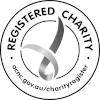A. Income and tax relief for artists
1. Tax exemptions for prize money, fellowships and government grants
Exempt all arts prizes, fellowships and government grants from taxable income (mirroring Prime Minister’s Literary Awards), recognising them as irregular income that supports creative development.
2. Improve access to income averaging
Expand awareness and uptake of the ATO’s income averaging provisions through better guidance, improved MyTax functionality, and targeted outreach to artists and tax professionals.
3. Exempt artists from Non-Commercial Loss (NCL) rules
Remove arbitrary income caps and asset tests by exempting artists from NCL rules where they meet the ATO’s “in business” test under TR 2005/1, ensuring the rules reflect how creative practices operate.
4. Continue and boost the instant asset write-off scheme for artists
Retain and expand the instant asset write-off scheme to support artists’ investment in tools, materials, and artworks, while also encouraging businesses to purchase artworks.
5. Allow living cost deductions for artist residencies (up to 12 months)
Recognise artist residencies as legitimate professional activities by making living costs tax-deductible, aligning with research and development (R&D) expense treatment.
6. Reduce the GST and HECS burden on low-income artists
Allow artists to opt into GST registration only when income consistently exceeds the threshold and exempt original artwork sales and studio leases from GST for artists not registered for GST.
7. Expand allowable deductions to include ICIP-related expenses
Recognise Indigenous Cultural Intellectual Property (ICIP)-related costs as legitimate tax-deductible expenses for First Nations artists.






